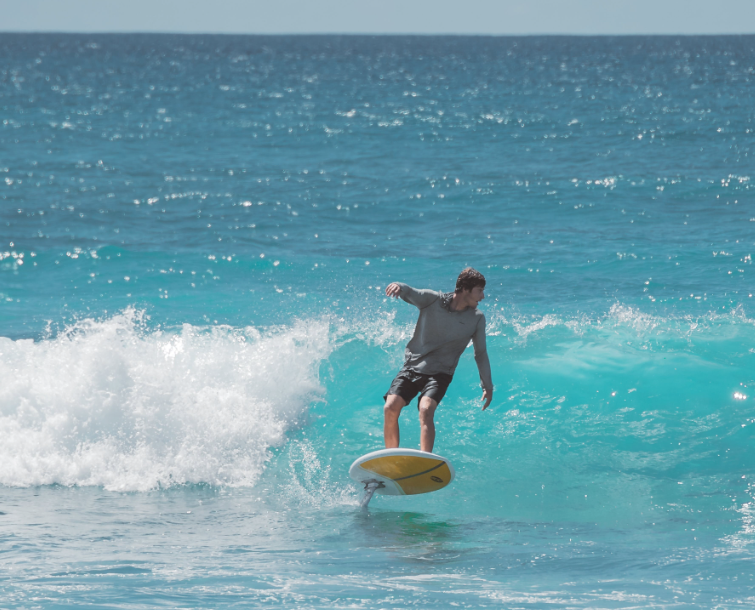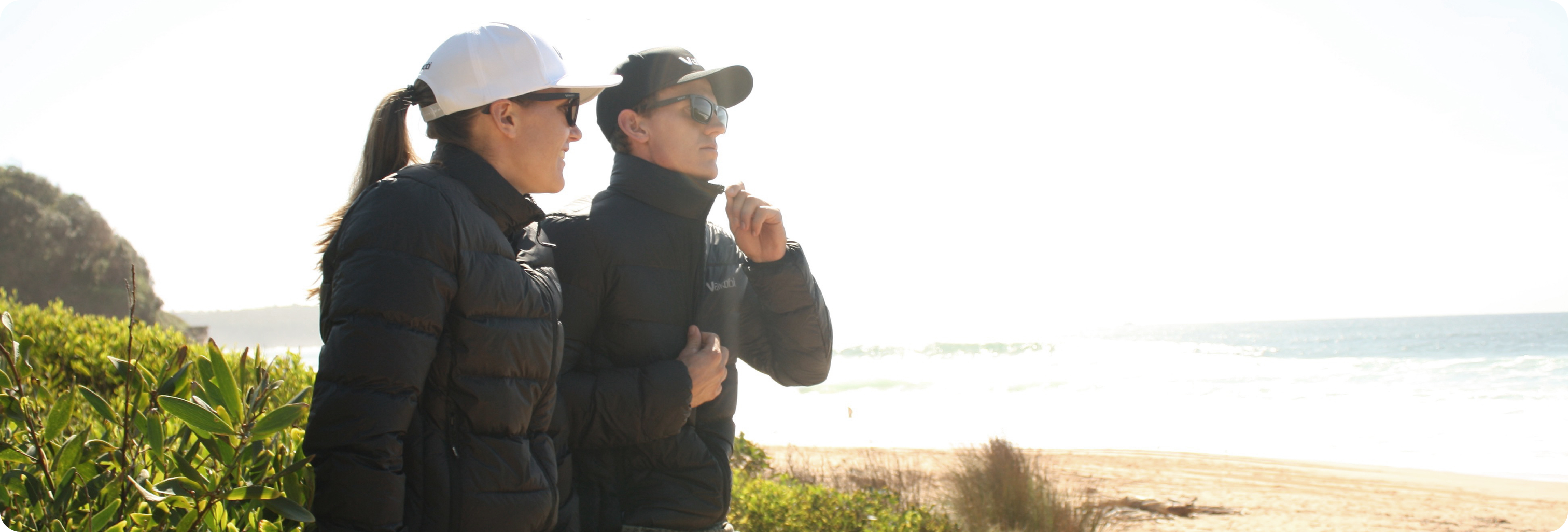If you’ve been wanting to know more about foil surfing, a.k.a. that distinct looking chunky surfboard with a long fin and wings attached to the under side, this article is for you! Here’s our take on foil surfing, what it is and how it works:
What is Foil Surfing?
Foil surfing (or surf foiling) is an exciting and relatively new sport, considered to be the future of watersports. It consists of riding a surfboard with a hydrofoil attached to it. The hydrofoil is a long hydrodynamic fin with wings that extend into the water, which replaces the classic surf fins. Foil surf has been around for a while, the famous surfer Laird Hamilton being the first one who introduced it in 2003. What made surfing while foiling explode in popularity recently is the amazing progress in the technology and the materials used, making it faster, more efficient and overall more enjoyable for foiling surfers.
The hydrofoil technology makes the foil board to hover smoothly above the water. Foil surfing offers a completely new approach to riding waves, allowing you to fly above the surface of the water, instead of sliding through the waves. The foil rider experiences a completely different feeling, much like snowboarding in deep powder, smoothly floating on a cloud along the ocean. This magic gliding sensation is highly addictive, so chances are you’ll get hooked after you’ll try it.
Besides surfing, foiling can be experienced in other different watersports, like wing foiling, kitesurfing, foiling SUP and e-surfing (electric surf board).
Foiling is a game changer when it comes to redefining rideable conditions, adding opportunities to enjoy the ocean playground at all times. Foil board surfing allows you to ride the smallest waves, so you can catch more waves, which ultimately means more fun time in the water. You don’t even need waves to get foiling, you can ride a foil surfboard anywhere you find water, so you have many more options when it comes to surf foil spots
The foil allows you to go twice as fast even on non-peaking waves. The enhanced speed of foiling makes even average waves to be super fun to ride.
Foiling opens up a new world in terms of downwinding options, redefining the length of the ride and the distance covered: you can explore offshore surf breaks, travel miles of open ocean, ride for hours along the coast lines or between the islands.
When it comes to kite or wing foiling, you can go for a session in super light wind conditions (depending on the size of your kite/wing and your skills you need as little as 6 knots to be able to ride), meaning less days waiting on the shore for the wind to pick up. No waves at all? You can hitch a tow with a power boat to get you going then ride the wake of the boat thanks to the momentum of the hydrofoil
Last but not least, the foiling community is super enthusiastic and always looking for the next new piece of foiling technology to try out
With so many benefits of foil surfing, you might ask “What’s the catch”? The only potentially hazardous aspect to foiling is that the mast (the long part reaching the water) is quite sharp, so it’s mandatory to practice foiling while wearing a helmet, and you can try to fall away from the foiling components when you come off (and you will at first!). Keep in mind not to risk the safety of the surfers in the line-up, so make sure you keep the distance from other riders in the water.
Also, you need to wear a surfing PFD or foiling life jacket, at least for the first foiling sessions. As you’ll progress, you’ll soon realise you can have bad wipeouts even while foiling in flat water, so you’ll keep the life jacket as an essential item in your foiling kit.
Foiling FAQ:
Is foiling harder than surfing?
The short answer is yes, learning foil board surfing is more challenging than surfing due to the specifics of the balance involved. That’s why it helps if you have advanced surfing or kitesurfing skills before you begin your foiling journey. Even an experienced surfer needs several hours to adjust to surf foiling.
The learning curve is quite steep and it can be humbling, but it’s definitely worth it for the thrill of it and also for being able to make the best of whatever conditions you find in the ocean on any given day.
How do surf foils work?
The hydrodynamic process used in foil surfing is similar to airplane wings: the wing of the foil directs the water pressure downward, reducing drag. This creates enough kinetic energy to lift the board out of the water.
Want to know how to foil surf?
Finding balance in your stance is key in learning to control your foiling board. After taking off, which is a similar process to that of surfing, you need to put your weight on the front foot, like snowboarding on the slopes. By applying pressure on your front foot, you’ll decrease elevation on your foil surfing board. When you are leaning on your back foot you are making the foil wing tilt up, which means you can go faster and elevate higher.
What should I wear while foil surfing?
When starting your foiling journey make sure you are using top quality gear best suited for foiling sports:
Vaikobi, proudly supporting the Australian Foiling Squad, offers an extensive collection of technical gear designed alongside performance foil sports athletes: check out the Vaikobi Foil Sport Page. Of course, wearing a helmet and a life jacket is essential for your safety.
Now you’re all set, you can count on Vaikobi, top foil sports provider, to have you covered for your next foiling adventure!
Stay safe and curious, have fun, enjoy the ride!

